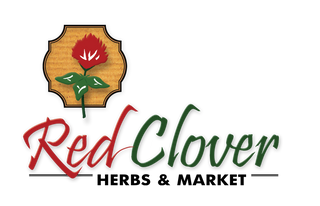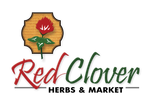LOBELIA (Lobelia inflata)
PART USED: Aerial portion
PROPERTIES: Relaxant, Sedative, Emetic, Cathartic, Nervine, Antispasmodic, Expectorant, Carrier for other herbs and properties—called the “Thinking Herb” by Dr. John Christopher
SYSTEMS AFFECTED: Nervous, Muscular, Immune, Circulatory
POSSIBLE USES: many of them are listed in a separate chapter in this book (chapter 3)
Lobelia is one of the greatest herbs that we have available to us. It was discovered by the great 19th century herbalist, Dr. Samuel Thompson. He was a contemporary of Joseph Smith and believed by Joseph Smith to be an inspired man. Dr. Thompson said, “There is no vegetable which the earth produces more harmless in its effect on the human system and none more powerful in removing disease and promoting health. It is calculated to remove the cause, and no more, as food removes hunger, and drink thirst. It clears all obstructions to the extremities, without regard to the names of disease, until it produces an equilibrium throughout the system, and will be felt in the fingers and toes, producing a prickling feeling like that caused by a knock on the elbow. This symptom is alarming to those unacquainted with its operation, but is always favorable, being certain indication of the turn of the disorder, and patients generally gain from that time. This plant is the most important article I make use of in my practice.”
In 1789, in the midst of much persecution of naturopathic practitioners by the allopathic doctors of the day, Dr. Thompson was brought to trial for the use of Lobelia. Much vituperative press accompanied this trial and has been quoted and then quoted again over the years for many of the same reasons as the original statements were written. Without going into great detail, let it be sufficient to say that Dr. Thompson was acquitted and the court record shows that no case could be made for the administration of Lobelia sensibly as being a harmful agent. The very fact that so much continual misrepresentation abounds concerning this herb indicates to me that it must be very valuable indeed in curing illness.
Lobelia is, as far as I know, the strongest relaxant and sedative herb known anywhere. As indicated, there are some who claim that it is a dangerous herb. I certainly would not describe it as dangerous in the sense of life-threatening, but it would be an easy herb to overuse and abuse. Lobelia is strongly emetic, so even though it probably could relax and sedate the respiratory system to the point of death, you would have a very difficult time keeping enough of it down to seriously harm yourself! You might, however, feel like death would be a welcome relief from the vomiting and cramping!
Lobelia can remove obstructions and congestions throughout the body and in the blood at a rapid and remarkable rate. An overdose produces the very strong response of vomiting and diarrhea. The vomiting and diarrhea are brought about because the eliminative organs cannot keep up with the housecleaning that the Lobelia has set into motion. Lobelia is a vasodilator and a muscle relaxant. Coupled with the vomiting these sensations can be really alarming! But, even in an overdose situation, the marvelous cleansing that has resulted eventually leaves the person feeling wonderful—energetic and relaxed at the same time. It takes a very large amount of Lobelia to produce these symptoms. It is not something you need to be concerned about. If you take a bit too much, your body will respond with a slightly chilly sensation. This early warning signal can be trusted and passes in just a few moments.
Lobelia is the most efficient of the herbs that act as carriers for other herbs. Lobelia added to any combination will deliver the herb quickly and efficiently to the area of distress. Moreover, it seems to be selective in its course of action. Dr. Christopher often described, in his talks and lectures, the cases of two young men who were similar in age but completely different in strength and constitution. Each young man had a boil forming on his neck. The same formula, with a bit of Lobelia added, was administered to both. The strong, robust young man with a good digestion and elimination system was healed by the boil disappearing into the body and the poisons being carried off by his system. The other young man, very weak and delicate, was healed by the boil continuing to encapsulate and grow on his neck until it could be safely removed; his system did not have the strength to process the toxins internally. Because of the intelligence of the Lobelia the best action for the circumstances was chosen by the body.
Dr. Christopher often referred to Lobelia as the “thinking” herb.
I have personally witnessed this aspect of the action of Lobelia.
Because Lobelia is such a strong relaxant I never give it, especially to small children, without a baseline pulse rate being established. This enables me to ascertain how much the pulse is slowing, if at all. This does not have to be an exact count, only a feel for what is going on. In sick children the pulse is usually racing and thready and the slowing brought on by the Lobelia is actually a beneficial effect.
Lobelia is usually administered as part of a formula, rather than by itself. When used as a small percentage of a formula, it is possible to get all of the beneficial effects of Lobelia and never have to give a thought to possible overdose.
If I am dealing with a child whose pulse is not racing or with a particularly debilitated adult, I will administer a stimulant such as Cayenne, Ginger, or Peppermint prior to, or along with, the Lobelia. This is not difficult since Peppermint tea is probably indicated anyway and it takes only a swallow or two of tea to offset the sedative effects of the Lobelia. Formulas containing Lobelia already have a mild stimulant added into the recipe in most cases.
SOME BASICS ABOUT THE USE OF LOBELIA
In childbirth, Lobelia is often administered with Cayenne as a means of relaxing the pelvic muscles. I have found that this gently speeds labor along. The increased circulation produced by the Lobelia and Cayenne helps in producing a very pink, well-oxygenated child and in keeping the mother from tearing.
BBL—the recipe is given in the tinctures chapter—has so many uses that, try as I might, I will probably not get them all listed. In this formula, Lobelia is combined with Blue Vervain, Blue Cohosh, Black Cohosh, and Skullcap to produce an antispasmodic formula, nervine, and pain reliever. Antispasmodic means that BBL will provide relief from anything that manifests with spasms or pain with a pulsing quality. Examples might be coughing, muscle or abdominal cramping, or any kind of pain that pulses—such as toothache, earache, certain types of stomachache, pleurisy, and boils.
BBL is much more than a pain reliever and antispasmodic. It is also a nervine formula, which means that it also helps to rebuild damaged nerves wherever they may be in the body. BBL has a special affinity for the spine, the motor nerves at the base of the skull, and the brain.
As a pain reliever, BBL should be applied externally to the skin around broken bones, smashed fingers, or strained shoulders. A cloth soaked in BBL and applied as a poultice can relieve even extreme pain. A few drops, in water, should also be taken frequently by mouth.
I smashed the index finger on my right hand thoroughly one day and the pain was excruciating. I put Arnica oil on it—for the swelling. I poured some BBL tincture into a small paper cup and put my finger in it. The pain was manageable that way and within a few hours most of the discoloration, swelling, and pain were gone.
A dropperful of BBL, taken at bedtime or added to the tub for a relaxing bath is one of my favorite ways to relax into a good night’s sleep. There is nothing narcotic, however, in the effects of BBL. There will be no stuporous type feeling, just relaxation and rest.
BBL can be taken internally and applied topically as a liniment for muscle cramps. Topical application does not require the giving of a stimulant. In fact, when using BBL for its relaxant properties, stimulant herbs such as Cayenne, Ginger, or Peppermint should not be used.
A few drops of BBL, EO oil, is very good in the ear for earache. The BBL acts as a pain reliever while carrying the medicinal properties of the oil more deeply and more rapidly into the affected and painful areas. The addition of BBL increases the antibacterial action of the Garlic and herbs in the EO oil.
Place two drops of EO oil in the ear, followed by 2 or 3 drops of BBL. I always warm both the BBL and the oil, if I possibly can. It is not fun to have something cold dropped into your ear, especially when the ear is hurting already. Put a small piece of a cotton ball in on top of the remedies.
A couple of dropperfuls of BBL in a tub of warm water relieves cramps, including really nasty menstrual ones. Taking it by mouth at the same time is also helpful. Used as a liniment on the abdomen, or on any muscle that is cramping, it brings almost instant relief.
A few drops of BBL should always be considered for convulsions in children. When working with children I usually use the BBL that is made with a glycerin base rather than alcohol. The alcohol formula is best for use in the tub, although you can use the glycerite. The glycerite leaves just a little bit of a sticky feeling on the skin after the bath. For convulsions—and the prevention of convulsions during a fever—I use a few drops of glycerin BBL by mouth and a bath in lukewarm water at the same time.
BBL is also excellent for the treatment of asthma—both as a way of dealing with an attack and as part of a long-term, overall program. Lobelia, added to any respiratory formula, will facilitate the clearing of the passages.
I have used Elderflower to which a bit of Lobelia has been added to reduce a fever. It is very effective.
*** Please note the number of times Lobelia, in a small amount, has been added to the tincture recipes found later in this book. Lobelia plays a major part in the effectiveness of the versatile and amazing BBL tincture formula. Please pay particular attention to this recipe and its description.
Dosage: Lobelia should be given in small doses for healing purposes, and in larger doses when its emetic or cleansing properties are required. A stimulant, such as Cayenne, Peppermint, or Ginger should be considered unless extreme relaxation is required.
Caution: Lobelia, taken in large quantity for too long, can cause nausea and coldness as the body attempts to give warning that it has had enough. Occasionally, these symptoms are mistaken for part of the illness and even more Lobelia (or BBL, which contains Lobelia) is given. It is possible for an overdose of Lobelia to slow the heart rate down. If this occurs, administering a mild stimulant, such as Peppermint —in a tea or a tincture or as an essential oil—or Cayenne tincture will remedy the situation. In sick children, and sometimes in adults, the pulse is often accelerated, making the slowing of the pulse created by the Lobelia a beneficial effect.
I usually prefer to use Peppermint. It tastes better and is beneficial for fever as well as for any upset in the digestive system. The need for a stimulant is very rare. Please do not interpret the above as any kind of reason not to use this amazing healing herb.
©Copyright Butterfly Expressions 2020, 2021, 2022


